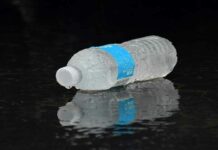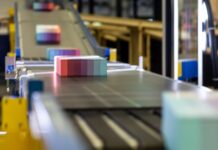In a world increasingly grappling with the consequences of plastic pollution, creating a sustainable future means taking decisive steps to reduce plastic waste. Every year, tons of plastic end up in landfills, oceans, and natural habitats, harming ecosystems and contributing to greenhouse gas emissions. Among the promising solutions is post-consumer recycled (PCR) plastic compounds, which offer a sustainable way to tackle plastic pollution by transforming discarded plastic into valuable resources. By repurposing plastics that have already served their initial purpose, PCR plastic compounds help to reduce waste and conserve resources. Here’s a closer look at what PCR plastic compounds are, how they work, and why they’re crucial for mitigating plastic pollution.
The Escalating Threat of Plastic Pollution
Plastic pollution has grown into a critical environmental crisis. The ubiquitous use of single-use plastics—straws, bags, bottles, and packaging—combined with inadequate disposal methods has led to vast amounts of waste littering our environment. Plastic waste clogs rivers, contaminates oceans, and even infiltrates food chains as it breaks down into microplastics. Addressing plastic pollution requires both systemic changes and innovative approaches, and PCR plastic compounds are among the most promising solutions for minimizing the environmental impact of plastics.
Understanding Post-Consumer Recycled Plastic Compounds
PCR plastic compounds are materials made from plastics that have already completed their first life cycle. These plastics come from a variety of everyday items, such as bottles, containers, and packaging, and are collected, processed, and repurposed into new materials rather than ending up in landfills or oceans. Through recycling, PCR compounds offer a way to combat plastic pollution by giving used plastics a new purpose.
This recycling method is instrumental in managing plastic pollution as it not only reduces waste but also curtails the need for virgin plastic, which relies on the extraction of non-renewable resources. By reusing plastic, PCR compounds help conserve resources, reduce greenhouse gas emissions, and protect ecosystems from the adverse impacts of plastic waste.
Benefits of PCR Plastic Compounds in Reducing Plastic Pollution
The advantages of PCR plastic compounds in the fight against plastic pollution are manifold. Here are some key benefits:
1. Resource Conservation: The production of PCR plastic compounds lessens the need for virgin plastics, which are derived from petroleum. This shift conserves natural resources and reduces reliance on fossil fuels.
2. Emission Reduction: Virgin plastic production is energy-intensive and contributes significantly to greenhouse gas emissions. Using PCR compounds reduces the demand for new plastic production, leading to lower emissions and a smaller carbon footprint.
3. Environmental Protection: Recycling plastics diverts waste from landfills and oceans, reducing the damage that plastic pollution inflicts on marine life, wildlife, and natural habitats. By giving used plastics a second life, PCR compounds prevent plastic from becoming litter or pollution.
4. Supporting a Circular Economy: PCR plastic compounds embody the principles of a circular economy, where resources are continually reused, reducing the amount of waste and preserving natural ecosystems.
The Process of Creating PCR Plastic Compounds
The production of PCR plastic compounds involves several stages, each designed to transform discarded plastic into usable raw materials. Here’s how it works:
1. Collection and Sorting: The first step is collecting plastic waste from various sources such as recycling centers, businesses, and households. After collection, plastics are sorted by type and quality to ensure the recycled compounds meet specific standards.
2. Cleaning and Shredding: To remove contaminants like labels, adhesives, and residues, the plastics are thoroughly cleaned. Afterward, the cleaned plastics are shredded into small pieces, preparing them for further processing.
3. Melting and Pelletization: The shredded plastics are melted down and molded into pellets. These pellets act as raw materials for creating new products and are a flexible format for easy handling and transport.
4. Blending and Compounding: To achieve desired properties, the plastic pellets are combined with additives. This compounding process allows manufacturers to create materials with specific characteristics, making PCR plastic compounds versatile for various applications.
5. Manufacturing: Finally, the PCR compounds are used in manufacturing to produce new products. These products can range from packaging materials and consumer goods to construction materials, demonstrating the adaptability of PCR plastic in supporting a broad array of industries.
Challenges in Expanding PCR Plastic Usage
While PCR plastic compounds offer a powerful solution for reducing plastic pollution, scaling up this approach faces several challenges. Enhancing collection and sorting systems is essential to ensure that more plastic waste is recycled efficiently. Currently, many recycling facilities lack the capacity to handle the volume and variety of plastics required for PCR production.
Developing advanced recycling technologies is another priority. Traditional recycling processes often result in a loss of plastic quality, limiting the materials’ potential applications. However, ongoing innovations in recycling technology can improve the quality of PCR compounds, expanding their applicability.
Public education also plays a crucial role. An informed public is more likely to participate in recycling programs, increasing the supply of recyclable materials and creating demand for PCR-based products. As consumers become more aware of the environmental impact of their choices, they can drive companies to adopt sustainable packaging and products made from PCR compounds.
Looking Forward: The Road to a Sustainable Future
PCR plastic compounds offer a promising route toward sustainability and a solution to the pressing issue of plastic pollution. However, achieving widespread adoption will require a collaborative effort from governments, industries, and consumers alike. Governments can support the growth of the PCR industry through policies that incentivize recycling and penalize wasteful practices. For industries, investing in PCR technology can both lower production costs and align with the increasing demand for environmentally responsible products.
On the consumer side, individuals have the power to reduce plastic pollution by supporting brands that use PCR packaging and making informed purchasing decisions. Public campaigns and educational programs can raise awareness about the benefits of PCR plastics and encourage more responsible consumption.
How PCR is Shaping a Sustainable Future by Tackling Plastic Pollution
While PCR plastic compounds provide a viable path to a cleaner future, the journey toward a plastic-free world requires continuous innovation and a commitment to sustainable practices. Advances in recycling methods, such as chemical recycling, are already improving the quality and efficiency of PCR production. By transforming plastic waste into new resources, PCR compounds allow society to address plastic pollution directly, transforming what was once waste into a valuable asset.
Ultimately, the widespread adoption of PCR plastic compounds will depend on the collective action of all stakeholders. Governments, corporations, and consumers each have a role in ensuring that PCR solutions become an integral part of the economy. With sustained effort, plastic pollution can be significantly reduced, creating a cleaner, healthier planet for future generations.
Conclusion
PCR plastic compounds represent more than just a recycling initiative; they represent a vision for a sustainable, circular economy. By reducing reliance on virgin plastic, PCR compounds conserve resources, decrease emissions, and mitigate plastic pollution in our oceans, landscapes, and communities. As we continue to develop and embrace these innovative solutions, we move closer to a world where plastic waste is a thing of the past.
Addressing plastic pollution is no longer a choice but an imperative. Through PCR plastic compounds and responsible practices, we can take meaningful steps to protect our planet. Embracing PCR solutions and supporting sustainable practices will allow us to build a future where plastic serves humanity without endangering the environment.



























